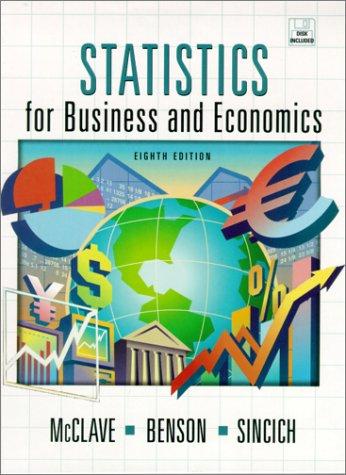The Gallup Organization surveyed 1,252 debit cardholders in the United States and found that 180 had used
Question:
The Gallup Organization surveyed 1,252 debit cardholders in the United States and found that 180 had used the debit card to purchase a product or service on the Internet (Card Fax, November 12,1999).
a. Describe the population of interest to the Gallup Organization.
b. If you personally were charged with drawing a random sample from this population, what difficulties would you encounter? Assume in the remainder of the exercise that the 1,252 debit cardholders were randomly selected.
c. Is the sample size large enough to construct a valid confidence interval for the proportion of debit cardholders who have used their card in making purchases over the Internet? Justify your answer.
d. Estimate the proportion referred to in part c using a 98% confidence interval. Interpret your result in the context of the problem.
e. If you had constructed a 90% confidence interval instead, would it be wider or narrower?
529 As Internet usage proliferates, so do questions of security and confidentiality of personal information, including such things as social security and credit card numbers.
NCR Corporation surveyed 1,000 U.S. adults and asked them under what circumstances they would give personal information to a company. Twenty-nine percent said they would never give personal data to a company, while 51% said they would if the company had strict privacy guidelines in place (Precision Marketing, Oct. 4,1999).
a. Verify that the sample size is large enough to construct a valid confidence interval for p, the proportion of all US. adults who would never give personal information to a company.
b. Construct a 95% confidence interval for p and interpret your result in the context of the problem.
c. Other than the size of the sample, what assumption must be made about the sample in order for the estimation procedure of part b to be valid?
Step by Step Answer:

Statistics For Business And Economics
ISBN: 9780130272935
8th Edition
Authors: James T. McClave, Terry Sincich, P. George Benson





